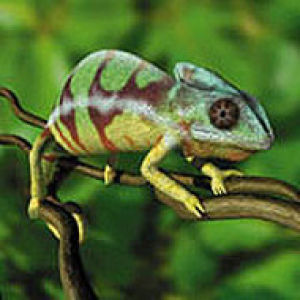Crouching Chamaeleo, Hidden Heron.
I had a wonderful photo session this afternoon! It was a beautiful day and I visited the lake at Wandsworth Common with my 70-200mm lens attached...
I feel a bit funny uploading this photo as it is not exactly the best technically, but I feel very pleased with it and it was the most exciting capture, so I'm putting it up in spite of its shortcomings. Were I choosing the best photographically, I'd have put up a close-up of a female mallard's head, side, and speculum: the reflection in its eye is v. large and crisp, and I am clearly visible in the pupil... Clearly visible as in you would be able to describe my clothing and pose, not "clearly visible" as in the 3-pixel "self-portraits" that I've previously joked about (e.g. here).
I'm pleased with this photo because I was presented with a problem (a tricky angle and foliage), and feel that I addressed it quite creatively: I saw this heron hiding under the bridge (it seems to like it there) from the other side of the lake as I was photographing a rather unusual mallard family*. I snuck around to a little ledge below the bridge where I thought I'd be able to get close to the heron; on arriving there (and gentling shooing away the pair of mallards hiding there...) I realised that since spring had sprung there was very much no clear shot from that angle, and the heron (well, the tip of its beak) was looking very twitchy. I switched to aperture priority and opened the aperture right up (f/2.8: the narrow DOF would make the foliage less intrusive): I hopped down onto the ledge, took this one shot, and the 2 others that I took featured only a blur of a bird as the heron's startled movements and escape were very rapid.
So, not technically the best photo (it is overexposed in places, and there is a whole load of foliage in the way!), but I was pleased with my solution and the final effect.
*The unusual mallard family... This mother mallard is almost entirely lacking in pigments: this suggests that she is either leucistic or a hybrid (possibly a wild * domestic hybrid). The fact that she still has a vivid speculum highlights the fact that the iridescent colours of the speculum are caused not by pigments but by "structural colouring" which is a product of the structure of the feathers. The fine structure and spacing of the barbs reflects lights only at certain wavelengths, and the spacing varies with angle of view which is why the colours change depending on the angle from which you see the speculum.
I think she is stunning! Four of her five ducklings look like normal mallardlings, but one is almost entirely brown which is unusual; perhaps she has passed on a part of her pigment disorder.

Comments
Sign in or get an account to comment.


